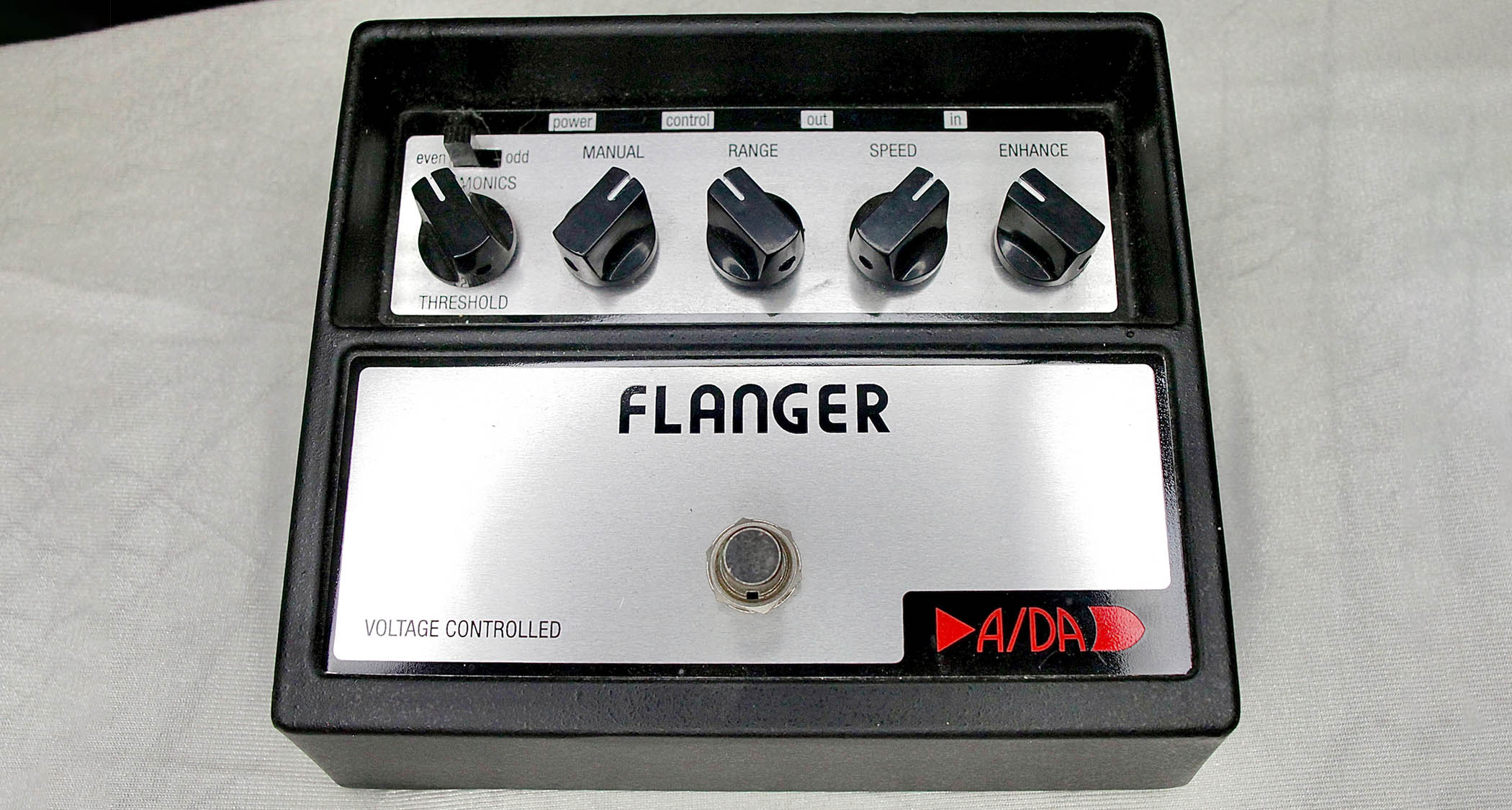“It actually goes up to infinity, which is what true tape flanging sounds like”: Beloved by Pat Travers and Adrian Belew, the A/DA Flanger was one of the greatest guitar effects of the ’70s
An original pedalboard classic, the A/DA Flanger was the first to sound like true tape flanging – with sounds ranging from the conventional to the esoteric

Of all the effects that emerged during the great stompbox explosion of the ’70s, flanger pedals were among the most coveted items. And one of the most coveted flanger pedals of this era was the A/DA Flanger, the first product developed by engineer Dave Tarnowski when his company A/DA (Analog/Digital Associates) arose from the ashes of Berkeley, California’s Seamoon Ltd.
Birthed in January 1978, the A/DA Flanger wasn’t the first flanger pedal on the market (although its Tarnowski-designed predecessor the Seamoon Studio Flanger was an early contender) but it certainly was the most advanced and sophisticated flanger pedal of the era.
The A/DA Flanger stood out from competitors like the Electro-Harmonix Electric Mistress and MXR Flanger, thanks to additional controls that included a built-in noise gate with Threshold control knob, an Even/Odd Harmonics switch and input for an optional control voltage pedal that could be used to manually adjust the delay time (same function as the pedal’s Manual knob).
In addition to the Manual (delay time) knob, other controls included the standard Range (width), Speed and Enhance (resonance) controls.
The pedal’s sound quality is excellent, and it is capable of producing a much broader range of effects than most competing flangers, including deep, dramatic jet-like flanging, rich and thick chorus and vibrato, brilliant metallic textures, insane laser gun zaps, hypnotic rotating speaker-style sounds and even crazy pitch-bending auto-whammy special effects.
It was also the only flanger pedal available in the ’70s that produced effects that sounded almost identical to true tape flanging.
“When it sweeps up, it sounds like it sweeps to zero time delay,” Tarnowski told me in the mid-’90s. “It actually goes up to infinity, which is what true tape flanging sounds like.”
All the latest guitar news, interviews, lessons, reviews, deals and more, direct to your inbox!
One reason why the A/DA Flanger was coveted is because it was very expensive, originally selling for a price equivalent to the cost of a decent entry-level guitar.
A/DA made about 50,000 units before the pedal was discontinued in 1981. A/DA produced a limited run of excellent reissues during the ’90s and resumed production in 2009 until recent years when their supply of essential bucket brigade chips ran out. In 2016 A/DA introduced the compact, pedal board-friendly PBF Flanger, which offered the same features as the full-size classic unit.
Pat Travers and Pat Thrall of the Pat Travers Band played a huge role in making the A/DA Flanger famous during the ’70s, using theirs extensively on Heat in the Street and the legendary concert album Live! Go for What You Know.
Paul Gilbert has used an A/DA Flanger since his days with Racer X in the ’80s, and it was the inspiration for his Ibanez Airplane Flanger
Adrian Belew had one in his rig during the early ’80s that he used to summon various unorthodox textures and animal noises with King Crimson and on his solo albums.
Paul Gilbert has used an A/DA Flanger since his days with Racer X in the ’80s, and it was the inspiration for his Ibanez Airplane Flanger. Other notable users include Page Hamilton, Jake E. Lee, J Mascis and Juan Alderete and Omar Rodríguez-López with the Mars Volta.
Original A/DA Flanger pedals as well as the reissues and PBF version have soared in price on the used market since the latest versions were discontinued a few years ago. The PastFx 80/A Flanger with an MN3007 bucket brigade chip is one of the closest contenders currently available.
Chris is the co-author of Eruption - Conversations with Eddie Van Halen. He is a 40-year music industry veteran who started at Boardwalk Entertainment (Joan Jett, Night Ranger) and Roland US before becoming a guitar journalist in 1991. He has interviewed more than 600 artists, written more than 1,400 product reviews and contributed to Jeff Beck’s Beck 01: Hot Rods and Rock & Roll and Eric Clapton’s Six String Stories.


